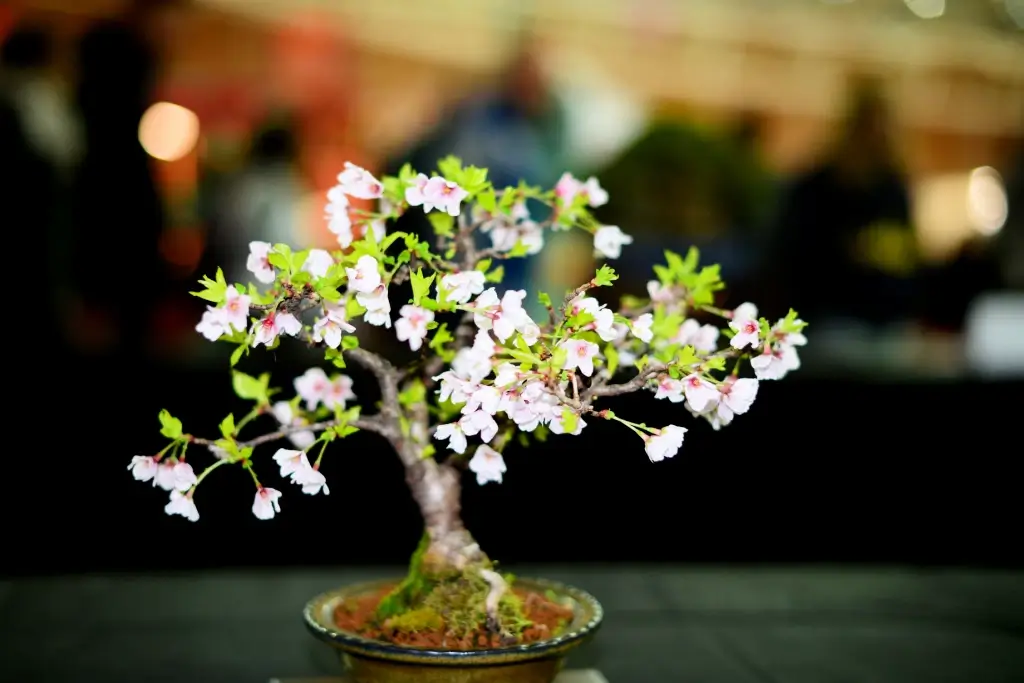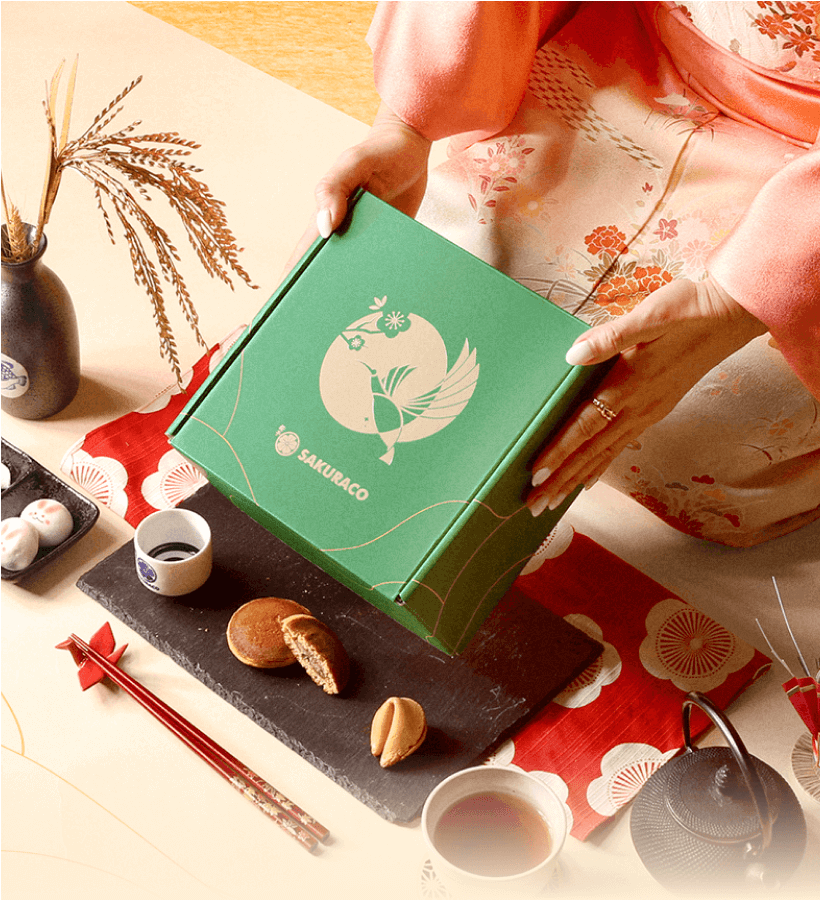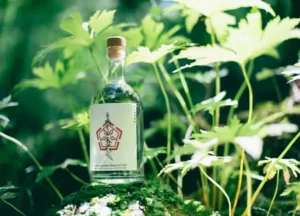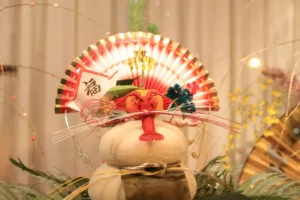For centuries, cherry blossoms have been a major theme in Japanese art, symbolizing beauty, renewal, and life. From ukiyo-e prints to Nihonga paintings, these artworks capture the magic of sakura in unique and breathtaking ways. Each piece tells a story of Japan’s deep connection to nature. Here are five must-see cherry blossom art pieces beautifully celebrating their timeless charm.
Table of Contents
Toggle“One Hundred Famous Views of Edo” by Utagawa Hiroshige (1856–1858)
“One Hundred Famous Views of Edo” includes several prints featuring cherry blossoms. Among the most famous is “Suijin Shrine and Massaki on the Sumida River”, which portrays sakura petals along the peaceful river. Another piece, “Gotenyama Hill, Shinagawa on the Tōkaidō”, shows people enjoying a flower-viewing festival under blooming trees. His technique, called bokashi, creates smooth color gradients, adding depth to the images.
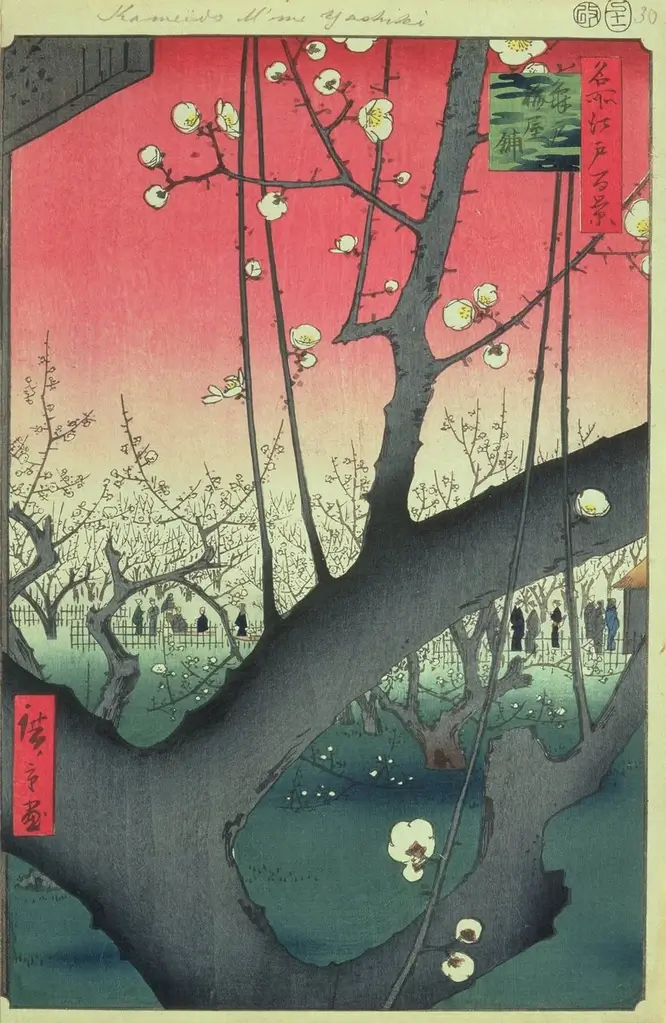
Hiroshige was part of the Edo-period landscape printmaking tradition, which focused on nature, seasons, and famous locations. His unique use of angled perspectives and asymmetrical compositions made his work stand out. The way he depicted cherry blossoms, framing them against rivers and temples, added a poetic quality to his prints. His influence reached Europe and helped shape the Japonisme movement in Western art.
“Cherry Blossoms at Night” by Yokoyama Taikan (1952)
“Cherry Blossoms at Night” is a Nihonga painting, a Japanese style that uses natural pigments on silk or paper. This painting blends delicate brushstrokes with soft, glowing colors, creating a dreamlike atmosphere. Taikan avoided bold outlines, letting colors blend naturally, giving the painting a sense of movement. His technique, called mōrō-tai, was inspired by traditional Chinese ink paintings but adapted to Japanese aesthetics.
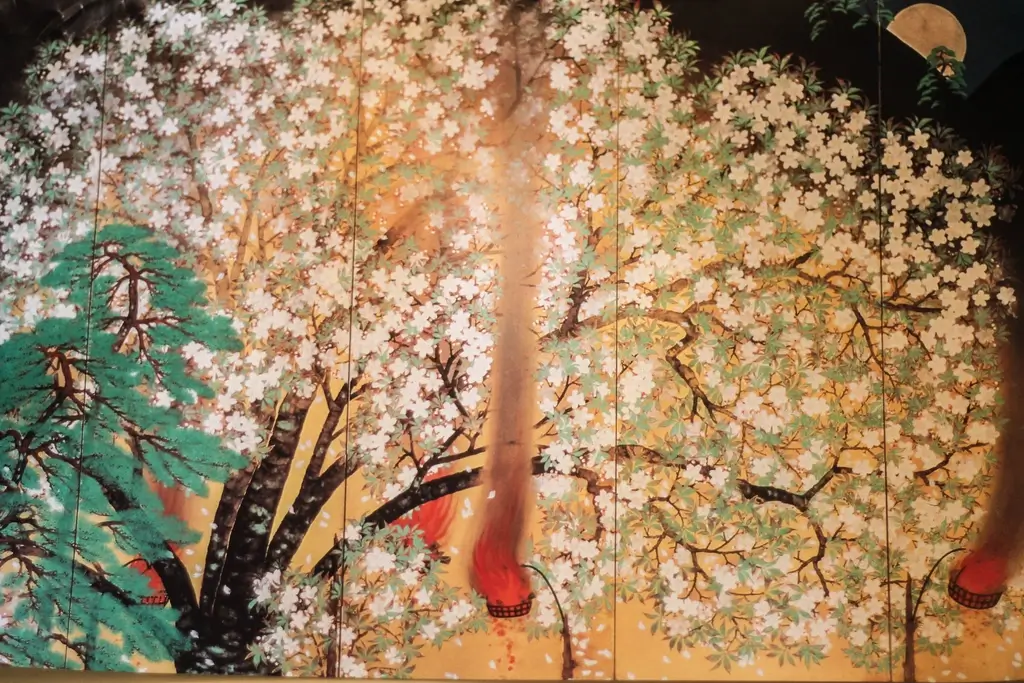
Taikan was influenced by Japanese spirituality and Zen Buddhism, which emphasize the short beauty of nature. His work reflected the idea of mono no aware, a strong awareness of the shortness of life. The Nihonga style, which he helped modernize, focused on harmony between humans and nature. Today, his work is a perfect example of cherry blossom art.
Are you looking for sakura snacks to enjoy this spring? Check out Sakuraco! Sakuraco delivers traditional Japanese snacks, teas, and sweets from local Japanese makers directly to your door so you can enjoy the latest treats directly from Japan!
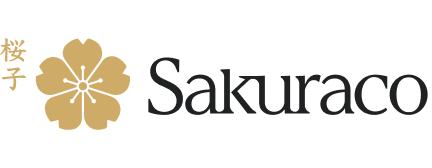
“Mt. Fuji and Cherry Blossoms” by Yokoyama Taikan (20th century)
In “Mt. Fuji and Cherry Blossoms,” Taikan combines Japan’s two most famous symbols into one. He uses soft brushstrokes and delicate shading to create a sense of peace. The sakura in the foreground appears almost weightless, while Mt. Fuji stands strong and timeless in the background. This painting follows the traditional Japanese aesthetic of simplicity and balance, focusing on natural beauty rather than excessive detail.
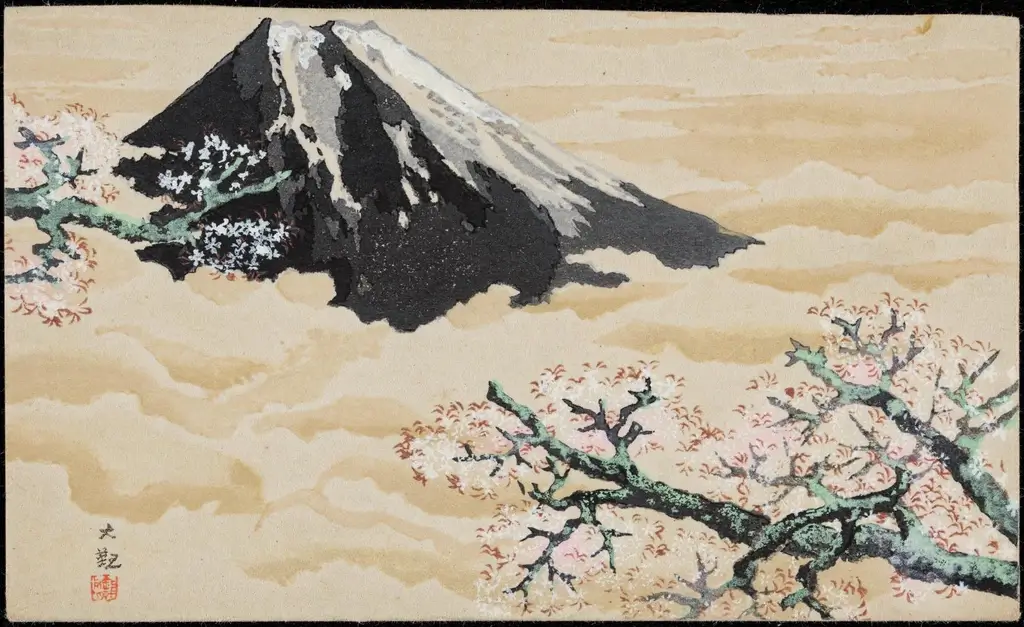
Taikan’s work was influenced by classical Japanese ink paintings, which often depicted landscapes in a minimalist yet expressive style. He was also inspired by Western painting techniques, such as depth and perspective, which he incorporated into Nihonga. His paintings reflect Shinto and Buddhist beliefs, emphasizing the connection between humans and nature.
“Cherry Blossoms at Night” by Kaii Higashiyama (1982)
“Cherry Blossoms at Night” captures the mystery and stillness of nighttime. His subtle shading and muted colors make the cherry blossoms appear almost ethereal. Instead of bright, vibrant colors, he uses soft whites and gentle blues, creating a quiet, dreamlike effect. The composition is simple yet powerful, focusing on a few blossoms in the moonlight.
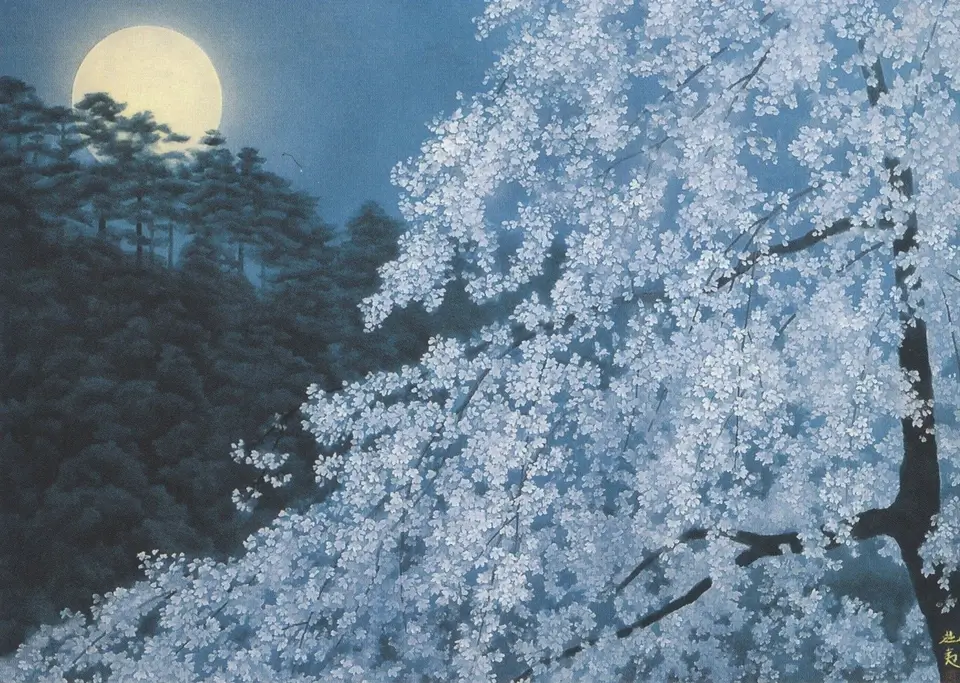
Both traditional Japanese landscapes and European Romanticism influenced his painting style. Like older Nihonga artists, he used mineral pigments and ink and added his modern touch by simplifying details. His work reflects the philosophy of Zen Buddhism, encouraging the viewer to find peace in nature’s stillness. The cherry blossoms in this piece seem to glow softly, symbolizing beauty and quiet reflection.
“Parting Spring” by Kawai Gyokudō (1916)
“Parting Spring” is a breathtaking painting that captures the beauty of cherry blossoms. Painted in 1916, this six-panel folding screen portrays sakura petals drifting over a quiet riverbank. Gyokudō’s use of soft tones and fine brushstrokes creates a dreamlike atmosphere, emphasizing the peacefulness of spring’s end. His mastery of light and shadow makes the viewer feel as if they are witnessing the last moments of the season.
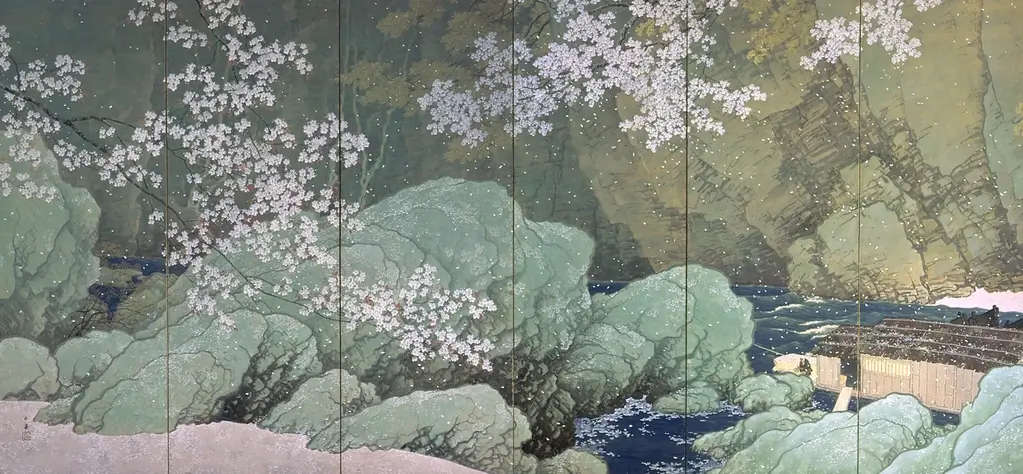
Both classical Japanese painting traditions and modern techniques influenced Gyokudō. His style combines elements of the Maruyama-Shijō school, known for its naturalistic approach, and the Kanō school, which focused on bold compositions. Unlike Western artists who used oil paints, Gyokudō used natural mineral pigments and ink, allowing for soft, layered colors that mimic the delicate nature of cherry blossoms.
What makes these cherry blossom art pieces unique?
These cherry blossom artworks stand out because of their distinct styles and techniques. Hiroshige’s ukiyo-e woodblock prints use bold outlines and vibrant colors, capturing Edo-period Japan with a sense of movement and depth. Nihonga painters like Taikan and Gyokudō use natural pigments and soft brushstrokes, creating a dreamlike and atmospheric quality.
Beyond technique, these artworks also express deep cultural and spiritual meanings. Cherry blossoms are a powerful symbol in Japanese philosophy, poetry, and religion. Many of these paintings and prints include temples, rivers, or Mount Fuji, reinforcing Japan’s connection to nature and tradition. Some, like Higashiyama’s work, embrace Zen simplicity, while others, like Taikan’s pieces, combine Shinto and Buddhist influences. Have you ever seen any of these works of art before? Which one is your favorite? Let us know in the comments below!

